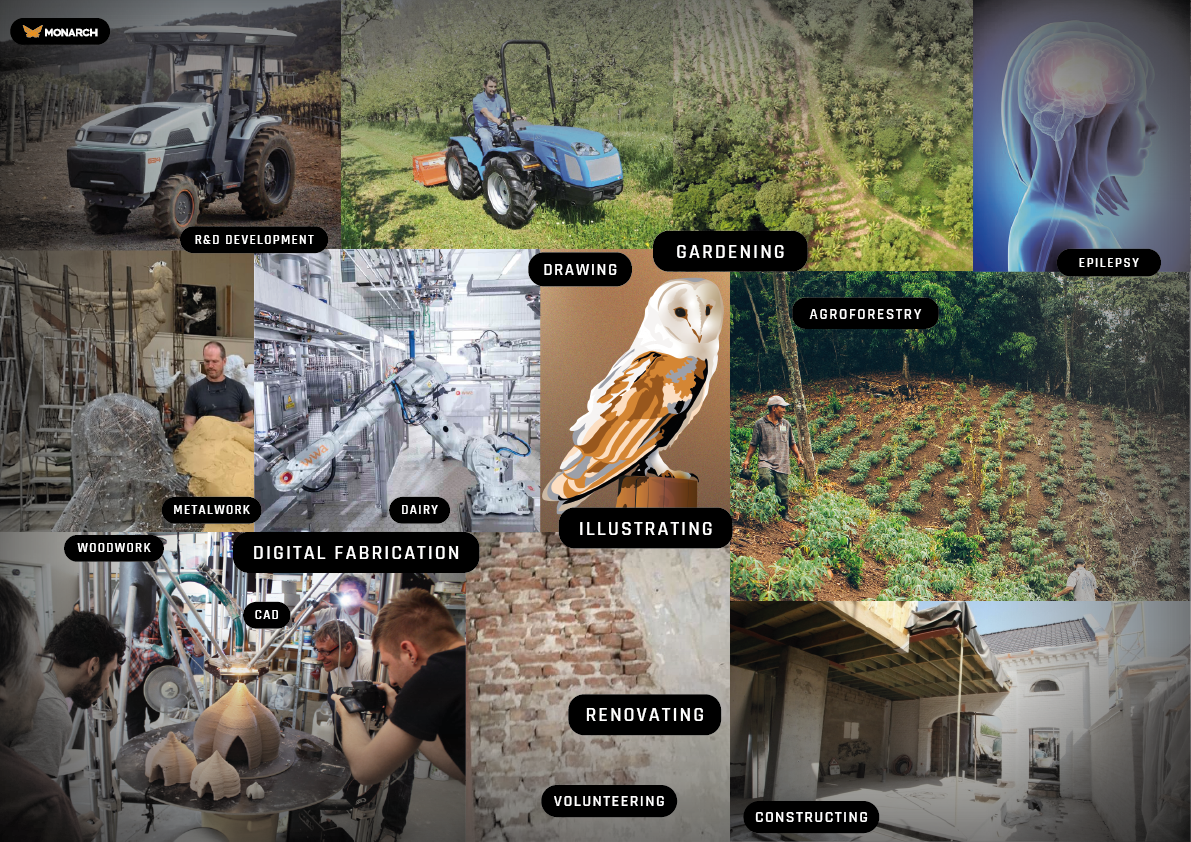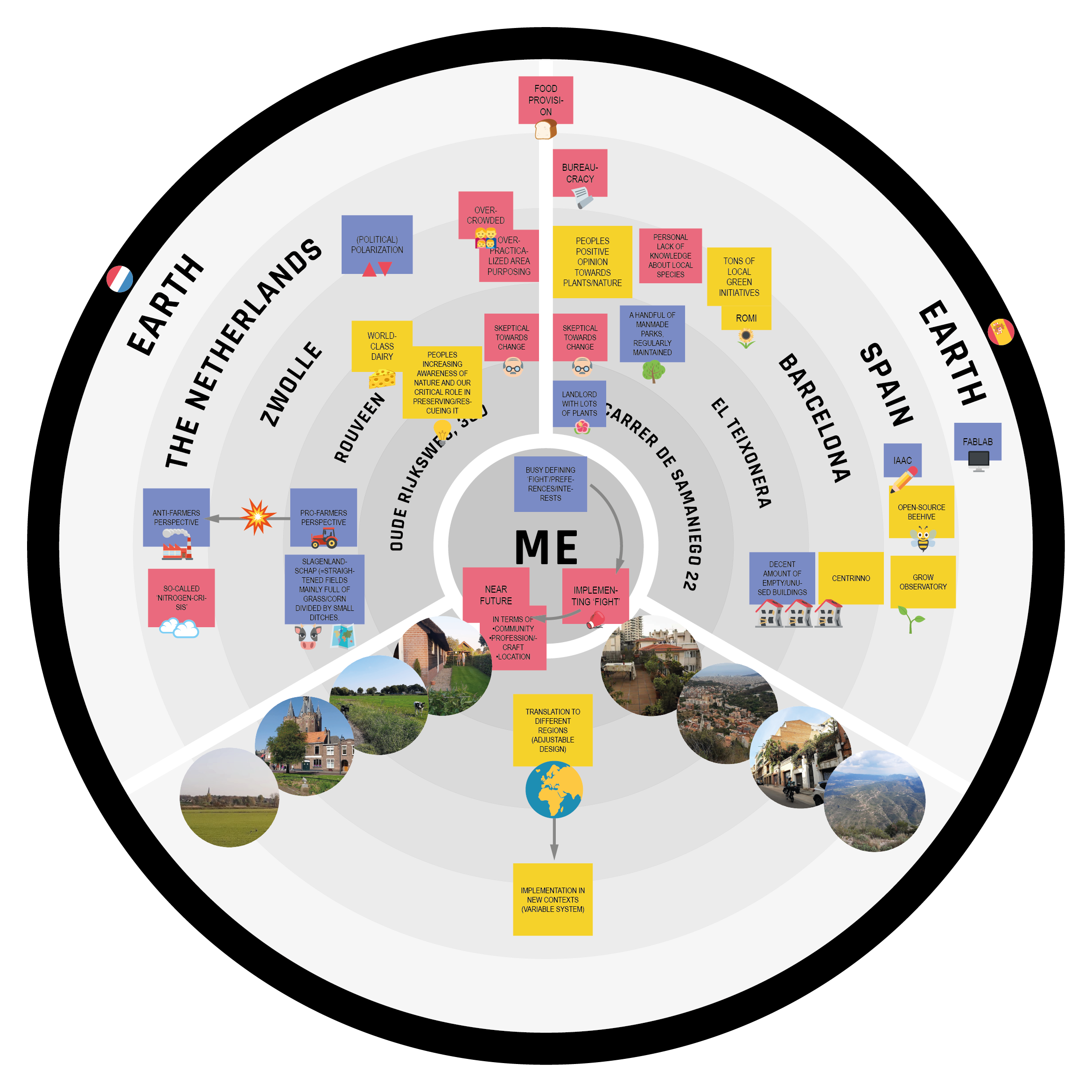Atlas of Weak Signals
After the Bootcamp-course with mapping my fights and interests the focus shifted to the so-called 🌍 'Atlas of Weak Signals' 🌍 this week. In which 'Weak Signals' are mapped. These being objects, people or data that sets a trend and points into certain directions that could create a future scenario. Since we're still mapping our own future scenarios I received the feedback on Monday during the Design Studio Review that in the current state of my map of interests a dimension could be added. Aside from the topics (X) and their commonalities/connections (Y) the background of those topics should be researched and defined as well (Z).


"Displaying your interests-map in 3D will make your interests
and Weak Signals better reasoned."
Clear.. So after that we continued with a interactive card game on the
Miro platform and the first drafts of personal weak signals were reviewed and either chosen or rejected. Since the platform allows to see, compare and add to each other's work there was plenty of reference material and our Design Spaces could take shape quite quickly. I picked Digital Fabrication, Agroforestry and Renovating as my three main Weak Signals and zoomed in and -out on them in a Multiscalar diagram which led to interesting learnings/realizations, e.g. the contrast between landuse of NL 🇳🇱 (shortage) and ES 🇪🇸 (desertification).
The primary reason for choosing these three Weak Signals is their diversity yet practical - almost primal - output, be it data, food, housing or a combination or variant on these. Individually they all feel close to me and my history in their own way.
The main reason for choosing Digital Fabrication are the past few weeks in Barcelona and IAAC specifically. By seeing the impact and potential that local production has and could have anywhere when applied correctly. I choose agroforestry since its close to the context where I grew up in and my growing interest in the the benefits of shifting from mono-crop to a kind of symbiosis inbetween crops, plants and cattle.
Lastly I choose renovating because of some experiences I had during small scale renovations with a group of volunteers for refuguees and immigrants and the amount of positive energy, value and change in mindset this creates for those involved.
With these main Weak Signals in mind we started Thursday with lectures of Elisava and FabLabBCN in which I heard about the work of alumni and the six focus areas of FabLab: Civic Ecology, Emergent Futures, Productive Cities, Future Learning, Materials & Textile and Sense Making. Personally this turned out to be very useful since it zoomed in into the areas of interest and gave real-life examples of where our Design Spaces could lead to.
By Friday our Design Spaces were put next to each other and sorted into one or more of the six pre-decided groups: Metahuman, Post-Consumerism, Solarpunk, Future Education, State Futures and Cultural Hybrids.
None of them attracted me directly. The reason for this is probably because they all seemed a bit floaty in their definitions. Which felt strange since I had the exact opposite when hearing about the six pillars of FabLabBCN. Eventually I related the most to Solarpunk and was glad to find some commonalities in between our boards there.
For the coming days I look most forward to the sessions within Jonathan Minchin and learning more about the selected Weak Signals since his expertise and previous work is closely related to my fields of interests as I learned by last week's session with him. Perhaps it could be possible to already put some Agricultural experimentation inside the Biology Zero sessions.💪